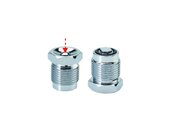I wouldn’t dive with a tank valve that has no regulator attached to it. If you are diving in a scenario where you need the redundancy, then you need the 2nd regulator. The whole point of an H valve or Y valve is to have an alternate 1st stage. It’s not the valves that fail in these scenarios, it’s the regulator.
Anyhow, I sort-of get the idea that keeping an unused valve plugged is an additional protection, but this absolutely a solution-in-search-of-a problem. And, those plugs don’t protect the threads, meaning if you dive in salt water with them installed and don’t remove them after the dive, they can easily get frozen in place due to salt corrosion.




